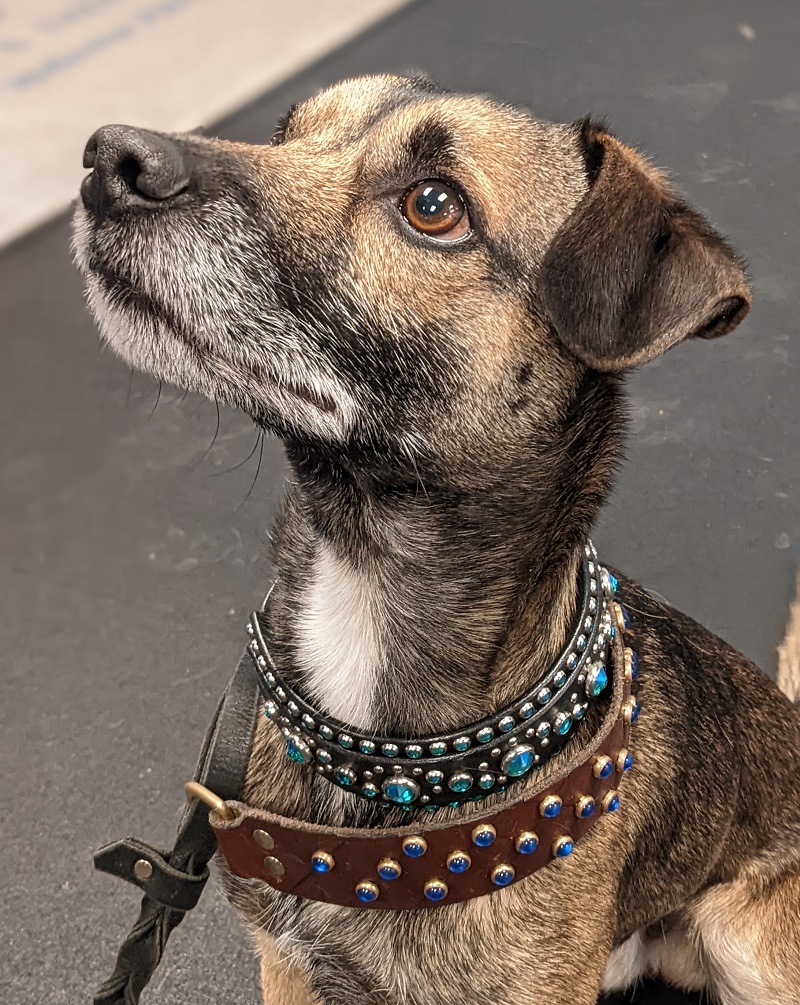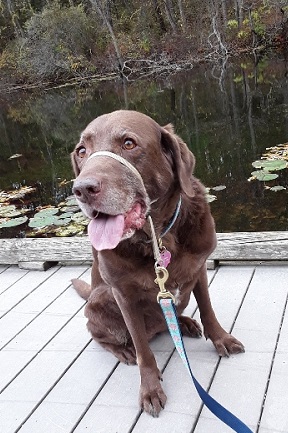Collars and Harness, oh my!
The Dos and Don’ts of Harnesses and Collars
by Angelia Oliverei, LVT, CVMRT

What is the one thing that every dog should have no matter the size or breed of dog? It’s a collar or harness. There are so many different styles and types of both, how do you choose what’s right for your dog? A proper fit is the most important factor when deciding what type of collar or harness to use. Secondly, what is the purpose you are trying to achieve with your collar or harness? Some of the most popular reasons when choosing collars or harnesses include:
- Preventing pulling when walking
- Safety when riding in the car
- Supporting your dog with mobility issues
- For sporting purposes including: sledding, weight pulling, running/jogging, and hiking
Collars
For any type of collar a proper fit is important. You never want a collar that is too tight or too loose. A good rule of thumb for the basic collar (buckle or flat collar) is that the collar should be snug enough to fit two adult fingers between the collar and neck.
There are several collars that are available that are all good options when worn and fit properly. Some examples would include:
- A headcollar which include a Halti Headcollar (my personal favorite) or Gentle Leader Headcollar: these collars are great to help prevent pulling as they redirect the dogs focus.
- Martingale collar: these collars are anti-slip and prevent dogs from pulling out of their collars.
- Buckle or flat collars: these are the most basic collars available and are commonly used to attach identification tags.
- Others: There are many other specialty collars on the market that maybe specialized for sport. etc.

Harnesses
Just like a collar, a proper fit is important. The number one fitting issue we see here at Pawsitive Steps is a harness that restricts range of motion in dog’s forelimbs, especially the shoulder joints. This is either due to improper fit or the type of harness. It is important that the front portion of the harness that goes in front of the chest does not lay over the shoulder joints, causing the dog to not be able to extend the forelimbs in a normal forward motion. Some recommended front end harness would include: Ruffware brand harnesses, Balance Harness by Blue-9, and the Freedom No-Pull Dog Harness by 2 Hounds Design.
Front and rear end harnesses are so important for dogs with mobility issues that we carry them in our office at all times. These types of harnesses are designed to give support to the front and rear portion of the dog’s body. They are typically used for dogs with mobility issues which include: getting into a standing or sitting position, supporting to walk, getting into and out of the house or vehicles, navigating stairs, and helping with urination or defecation. The front and rear end harness that we recommend is called a Help ‘Em Up Harness. This particular harness is very easily adjustable, is padded and comfortable for long durations of wear, designed for urination and defecation while worn, and machine washable.
In closing….
Collars and harness are essential for any dog. No matter the collar or harness a proper fit and comfort are important. Second to that is fashion! There are many awesome collars and harness on the market from crazy colors to elaborate patterns, so have fun with it!
